Attention park visitors! The annual lake fly hatch is currently in full effect around Devil's…
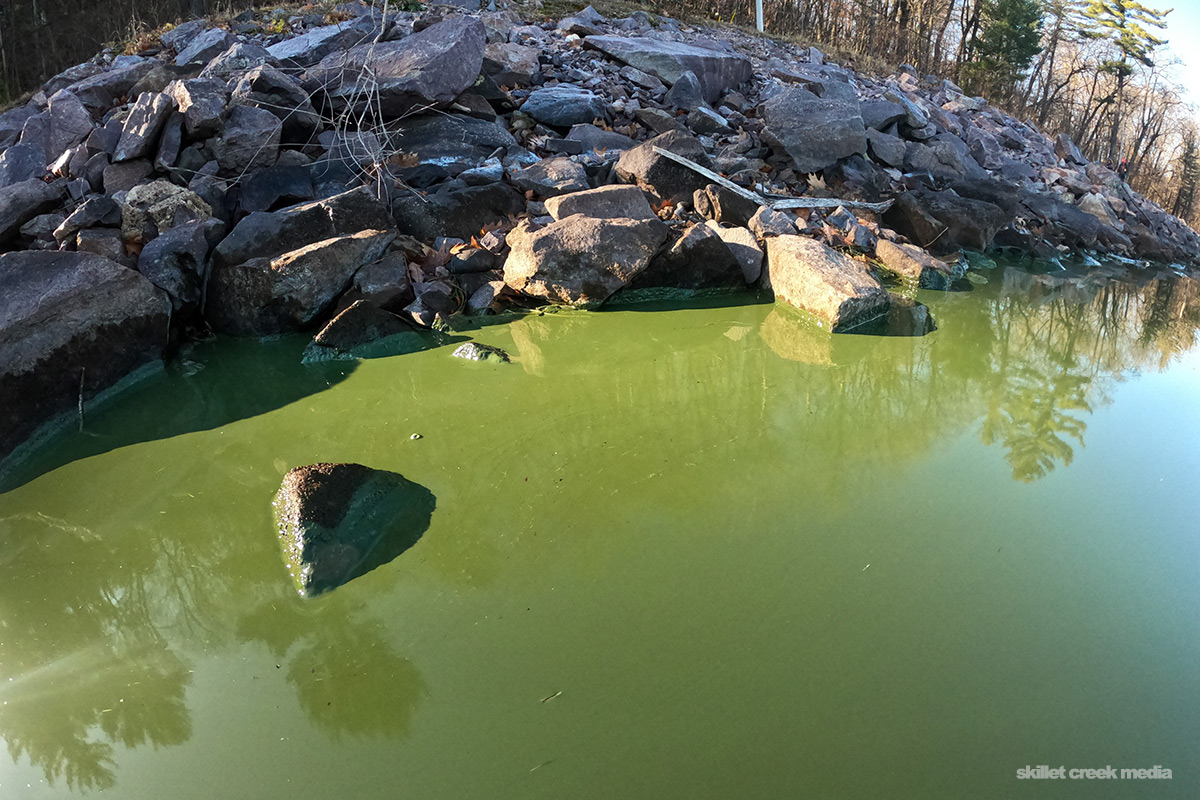
Visitors to Devil’s Lake State Park often talk about the deep, clear pristine waters of Devil’s Lake, so it’s been a bit of a shock here in late 2020 to see our lake exhibiting the same worrying signs of water quality issues common in many other Wisconsin lakes. We’re experiencing a late-season algae bloom!
Since When?
Folks I’ve talked to have told me that the first signs of a problem were already showing up in August when one local swimmer reported she had to stop swimming due to a skin irritation. By early November another one of our readers said she had reported green waves to the DNR on November 4th. Personally, I stayed away from the busy day-use areas due to the pandemic so I didn’t see the first thick sludge along the shoreline until Thanksgiving day on the north shore. Saturday, I paddled my kayak through it along South Shore road. (Keep in mind, that wind and waves move the thick stuff around.) Monday, I reached out to the water quality professionals for some answers.
Algal Blooms
Algae blooms such as the one we’re experiencing at Devil’s Lake are often caused by an excess of nutrients, usually phosphorus and nitrogen. These blooms can suck the oxygen out of a lake causing fish die-offs. If that wasn’t bad enough, in high concentrations these toxins may have severe biological impacts on wildlife and be toxic to you, your kids, and your pet.
The Drain
What many park visitors don’t realize is that the clear, pristine waters of Devil’s Lake are the result of human intervention. For many years near the turn of the last century, Devil’s Lake was surrounded by hotels and cabins, not to mention the tens of thousands of visitors! All that human waste went right into the lake! In the 1970s the park’s sewer main was broken and not repaired for nearly 10 years!* Crazy right? Today as you know, Devil’s Lake is more popular than ever with over 3 million visitors along with their pets, cars, garbage, and yep, human waste…
Still, algae was a much more common problem at Devil’s Lake before 2002 when a drain was put in the lake to remove phosphorus from the bottom. The regularly asked about “drain” sucks pollutants from the bottom of the lake and has done a pretty good job until now, keeping the lake looking “clean”. (We can talk about Ecoli another day!).
What Changed?
Yeah, that’s the big question and I reached out to various experts to see what I can learn. To some extent it seems, we just don’t know. I was told that water tests this year showed higher levels of phosphorus in deep water. So that’s probably the quick answer.
Since early November blue-green algae has been noted throughout the whole water column, meaning from top to bottom.
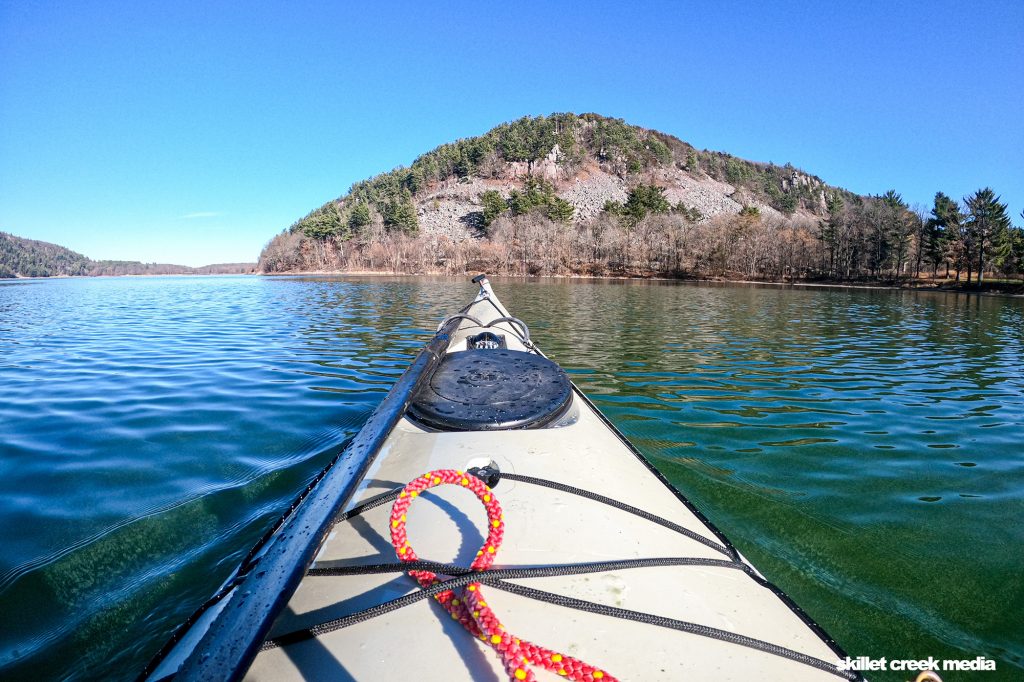
What’s more, a late-season warm spell probably spurred growth at the same time as the fall turnover which brought even more pollutants to the surface. (This turnover is called “destratification” and is when the bottom water mixes with the surface water.) At the same time, climate change may be a factor here. Others have wondered if the massive crowds and closed bathrooms in this weird 2020 season may be to blame? Chances are the answer is, “all of the above” and more.
Be Safe!
Luckily we’re not swimming this time of year. Well, most of us aren’t anyway. Thing is, if you see the green stuff floating in the water, especially when it’s that thick pea soup, you don’t want to get it in your mouth or on your skin. You don’t want your kids or your pets in the water either. Human symptoms of exposure to blue-green algae include; stomach cramps, diarrhea, vomiting, headache, fever, muscle weakness, and difficulty breathing.
The Wisconsin DNR has put together a boatload of information about Blue-Green Algae and safety issues. Visit their Blue-Green Algae page for more.
Bottom Line
Devil’s Lake looks huge and majestic surrounded by towering 500-foot bluffs and yet, it’s a small lake. Devil’s Lake is only about a half-mile wide and just over a mile across. Although rumored to be bottomless, it’s really only about 47 feet deep at the deepest point.
The lake’s natural filtration systems are all but gone. Wetlands that once existed on both the north and south shores are now sandy beaches, roads, and pavement. The only natural inlet at Messenger Creek was once a thriving wetland managed by beavers and home to every sort of wildlife. Today it has been choked off by invasive grasses, pushed aside by a boat landing and off-leash dog swim area. These choices all have impacts. You can’t simply keep “packin’ em in” without eventually destroying everything about the park we once loved.
This unusual (for Devil’s Lake) algae bloom is a message that something is out of balance. We ultimately need to decide what to do next, not just for tomorrow but in the long term to keep our lake healthy. The answer will have to be more than simply, opening the drain.
Master Planning & New Interpretive Center
The Wisconsin DNR is right now working on an updated Master Plan that can address these issues, be sure to stay involved and comment when you can. In addition, the park is also in the early stages of planning a new multi-use interpretive center.
Additional References & Thank YOU!
Thanks to the water quality folks at the Wisconsin Department of Natural Resources for looking into the algae problem and for their quick and informative responses to my questions!
* http://dnr.wi.gov/wnrmag/html/stories/2004/jun04/devlake.htm

For nearly 2 decades the Skillet Creek blog has focused on 3 main goals; To inspire you to visit and explore the Devil’s Lake region, to help you get the most your visit by sharing tips, events, and other helpful information. Lastly to advocate for our environment & wildlife and talk about how we can keep our natural areas amazing now and into the future! That last goal can sometimes cause controversy, but it’s the only way we can accomplish the first two. – Derrick Mayoleth, Owner.
This Post Has 4 Comments
Comments are closed.

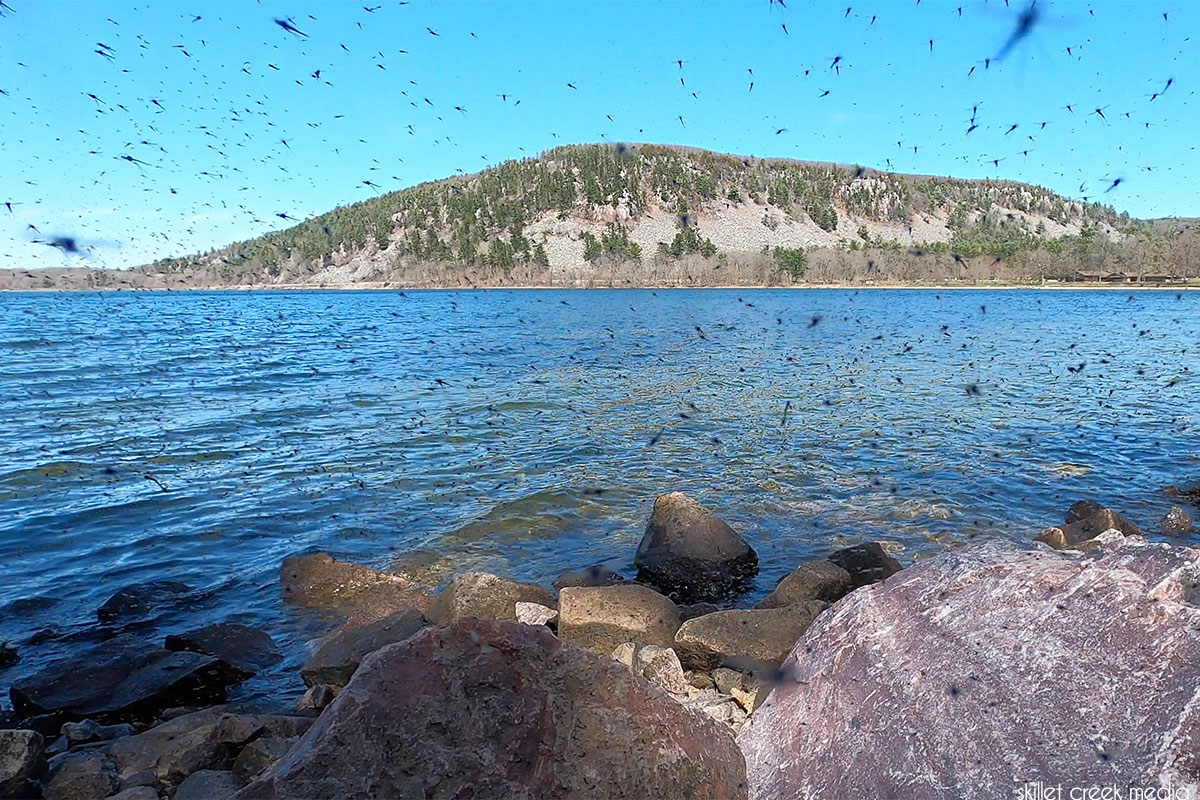
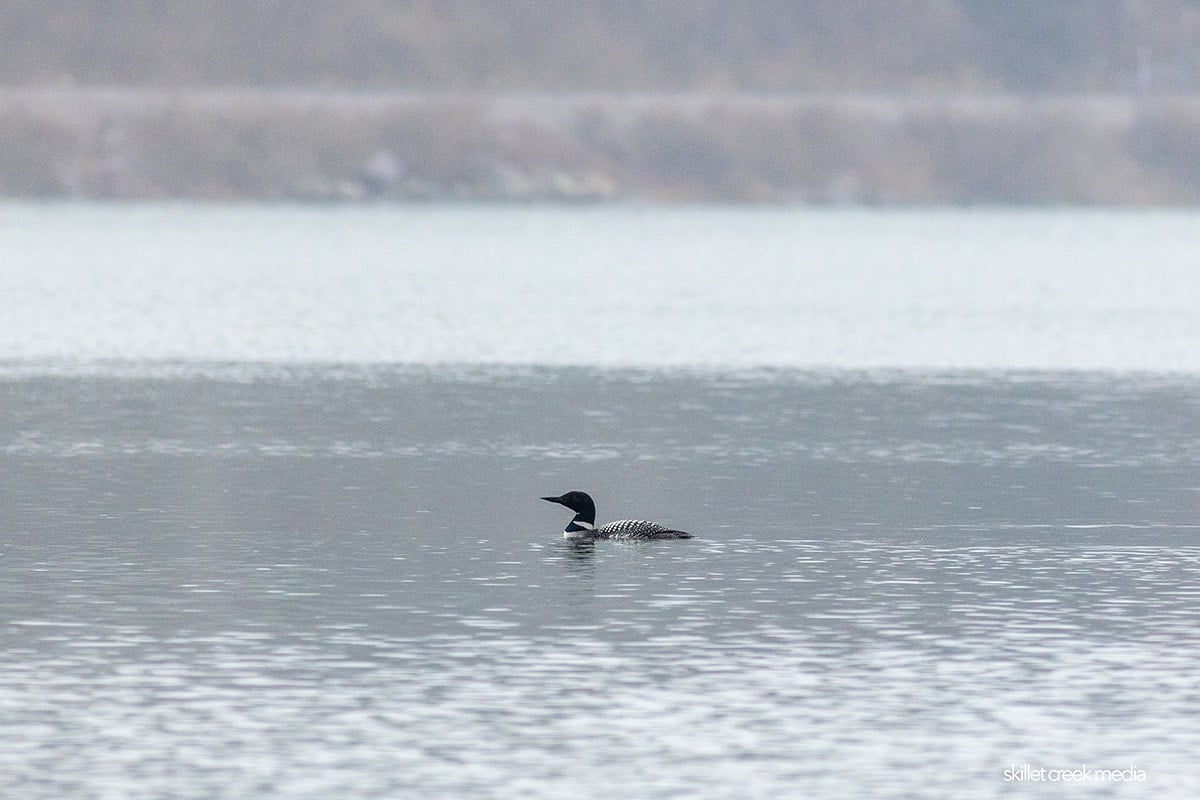
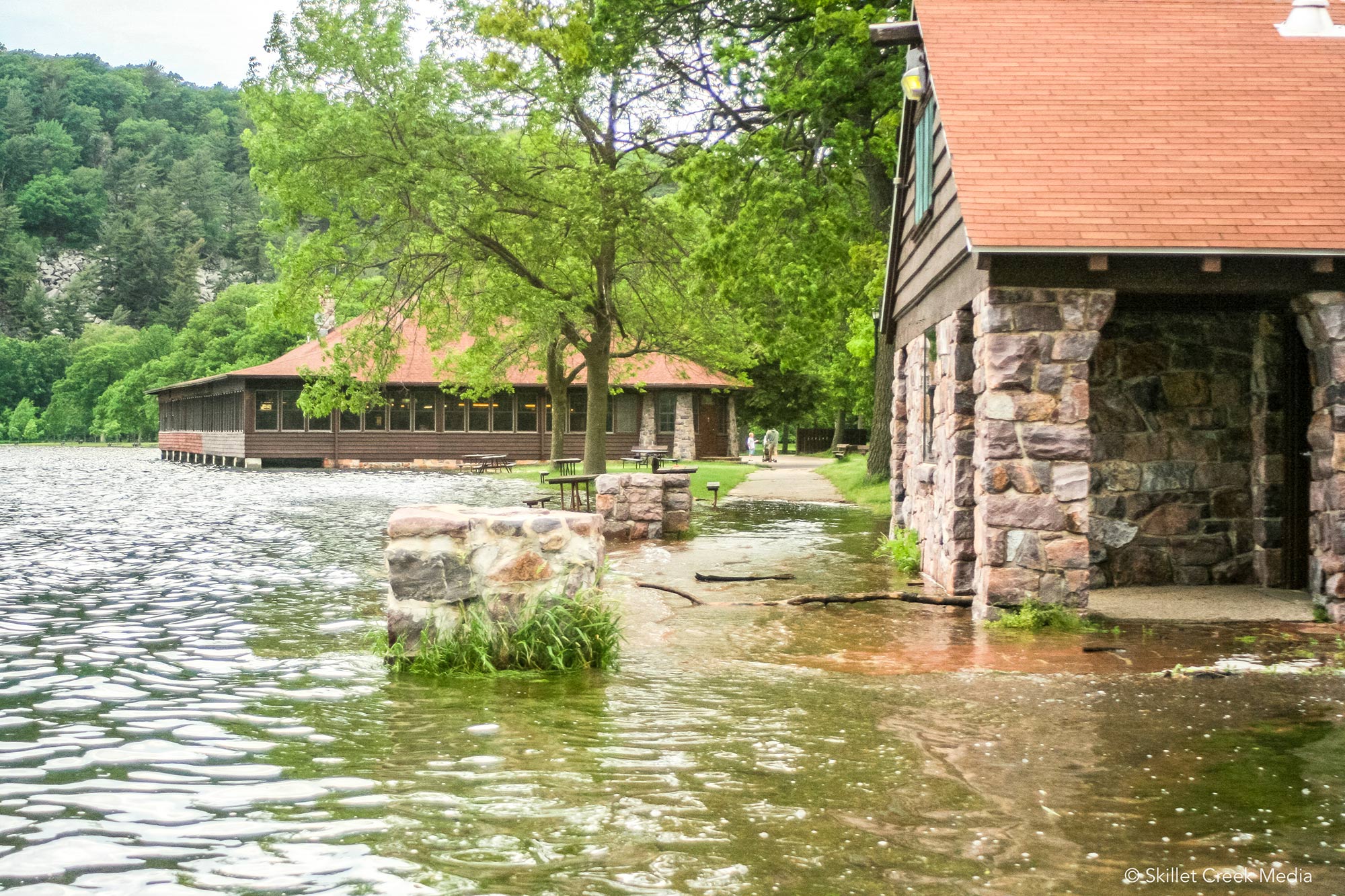
DERRICK; Everything you have written here is 100% dead on accurate. I am not in any way an expert on the ecology of Devil’s Lake. A couple of things I do know is that to rid the algae would mean looking to nature to care for the lake—-which would mean that all of us who love D/L have to sacrafice. Man made items like parking lots and buildings may have to be reduced in order to restore precious acreage back to wet land format. Most people will certainly object but nature is the only true long term answer for the proper cleansing. You may even have to dramaticly cut back annual attendance by as much as 1/3. I know 90% of the people would say this is crazy and reject as foolish but, the chemical collections in the lake and the overbuilding and over visiting and climate warming will all continue to enhance / increase the algae nightmare. Very few people will voluntarily agree to sacrafice—SAD
Thank Kurt. As you say, there are ways to correct the imbalances and keep the lake healthy… but do we have the will?
Derick you might want to read this
https://ocj.com/2014/09/concerned-about-water-quality-take-a-gander-at-the-geese/
Seems like it may apply here?
Gary
Hey Gary,
I’ve read a few of these discussions over the years and certainly, Canada Geese are a problem in many urban parks and beaches for sure. I’m not sure the number of geese that visit Devil’s Lake are large enough to create the problem. Well, in fact, we actually know that the problem is mostly historical and built up over years in the lake’s sediment, which is why the DNR invested in the drain in the first place. I think the lake is always right on the edge of a major algae outbreak and the water quality folks, for the most part, keep it in balance with regular monitoring and running the drainage system each year to siphon off the build-up. This year was a tipping point… Massive overuse, etc… (Human waste was in fact, all over the place when the restrooms weren’t open, which was gross.) Also from what I’ve heard, I’m not sure the lake was monitored & managed as well this year either. I was told that they struggled around the state due to covid. Again, I think Devil’s Lake is on the edge all of the time, given use, climate change, historically harder & heavier rains producing more runoff, lack of natural filtering, etc.. But certainly, geese may be part of the larger issue.